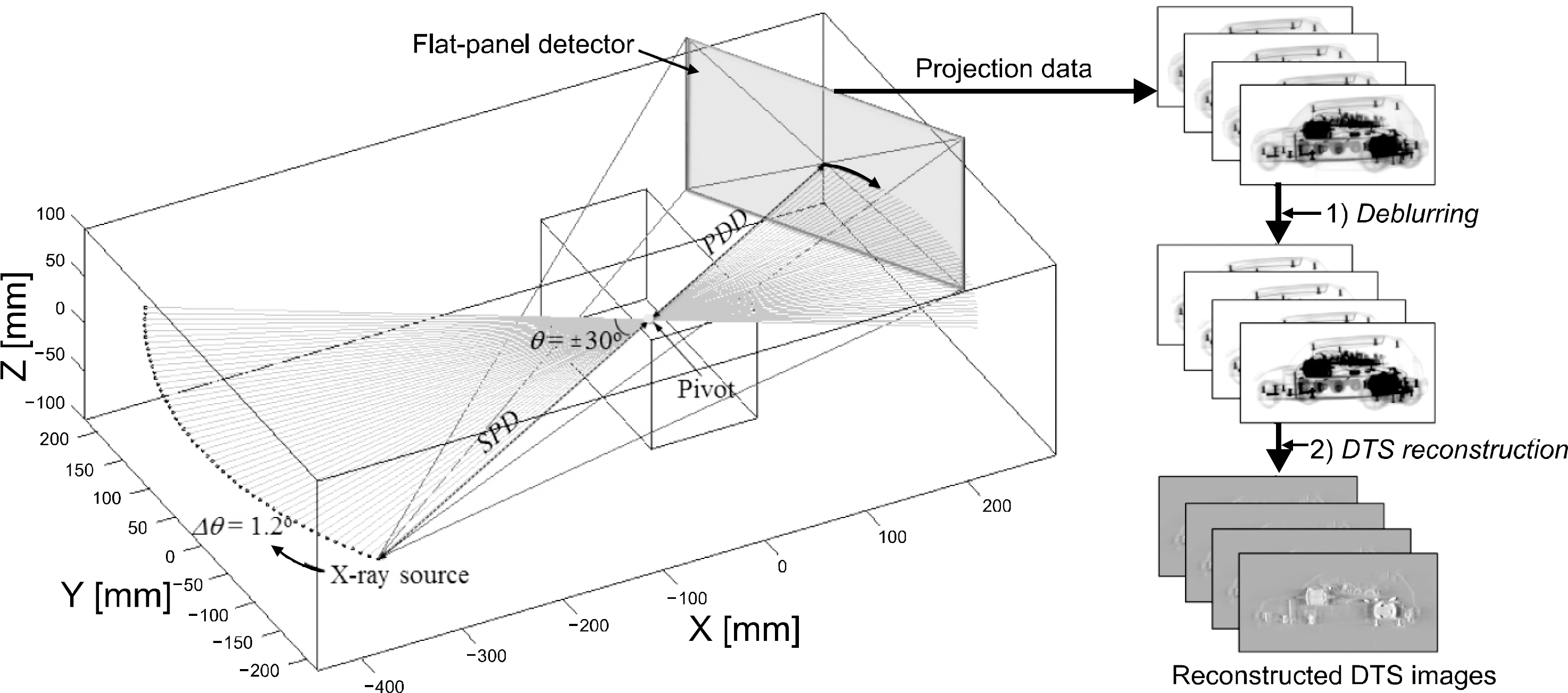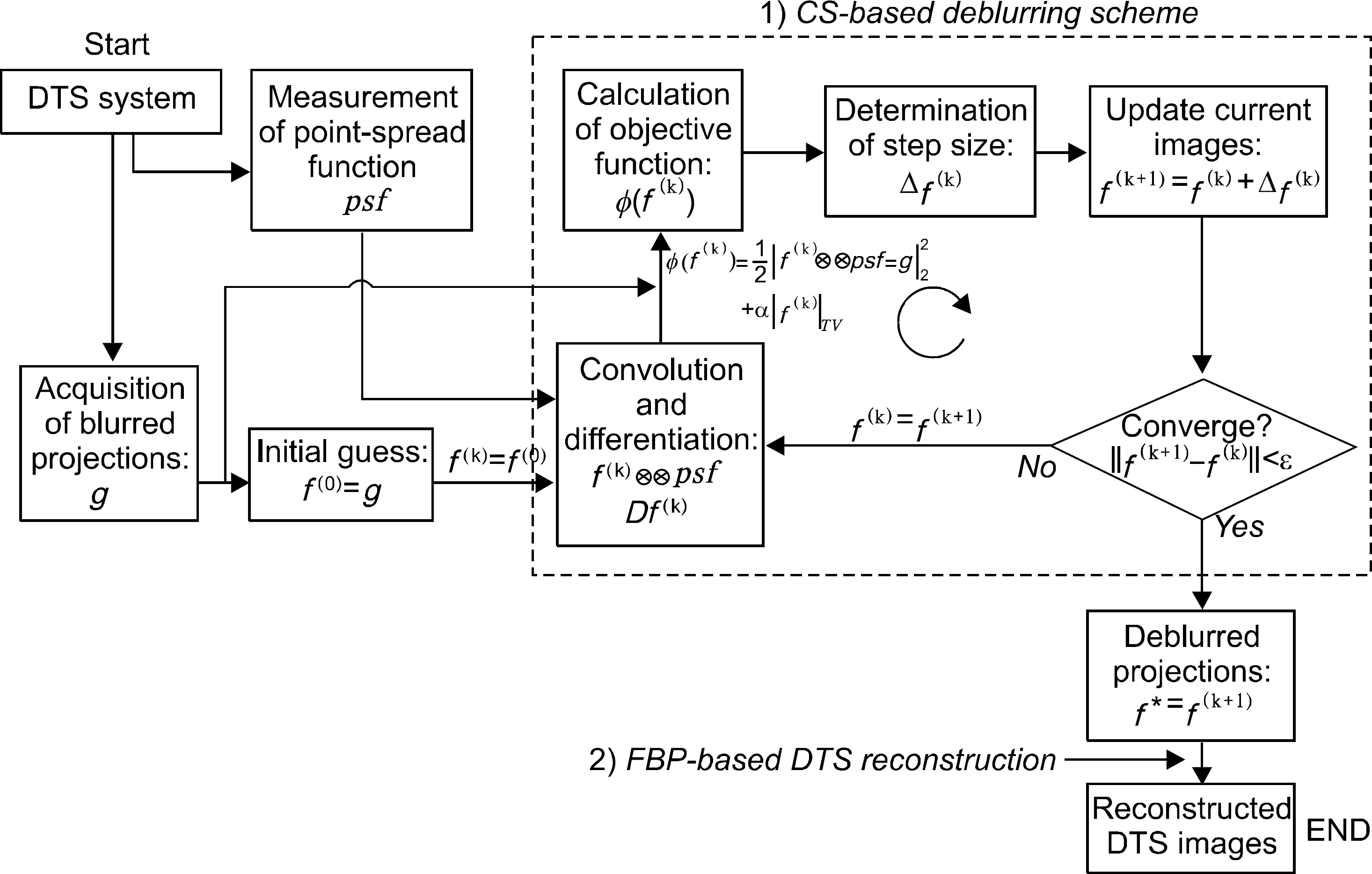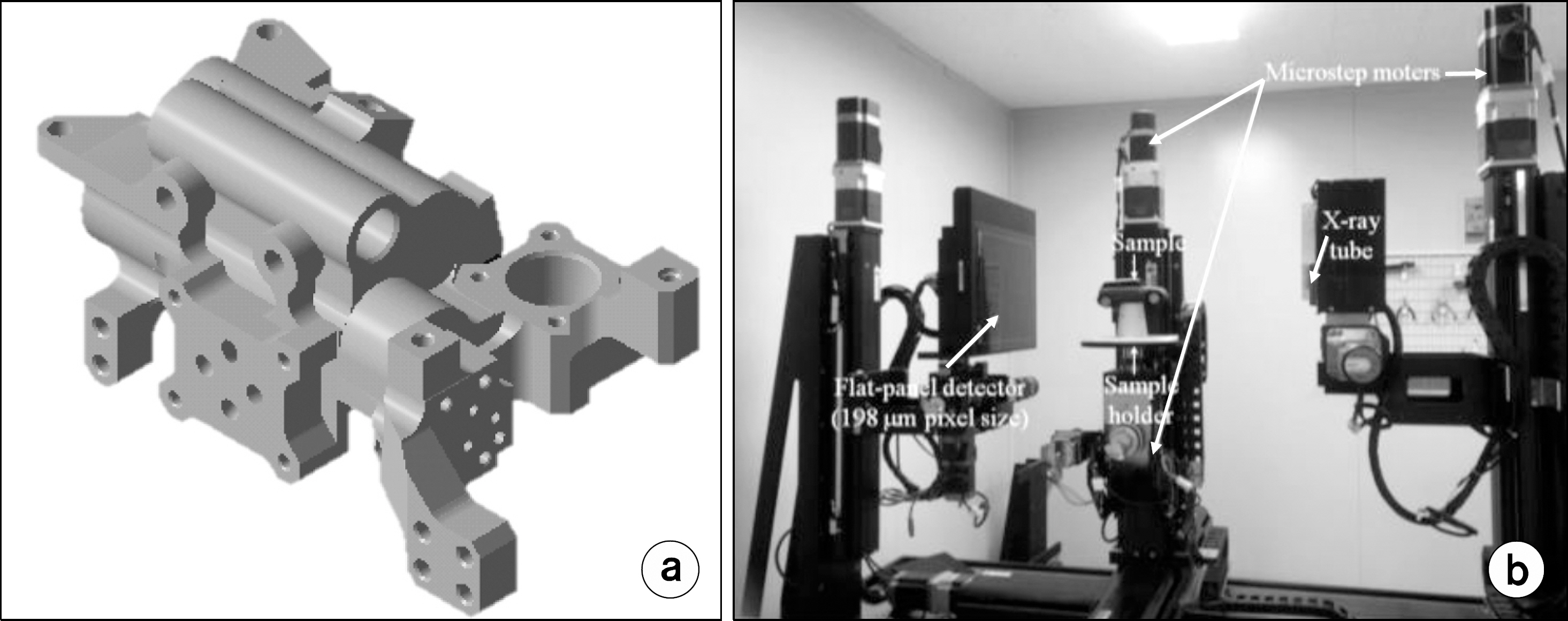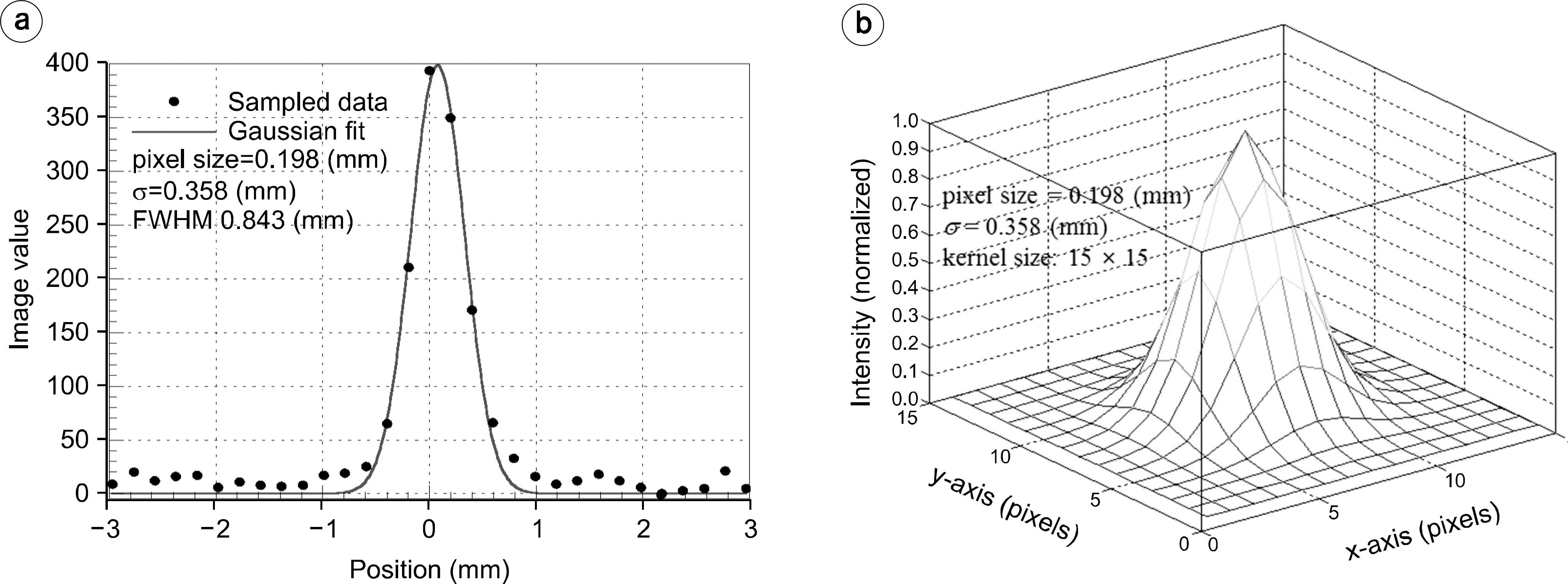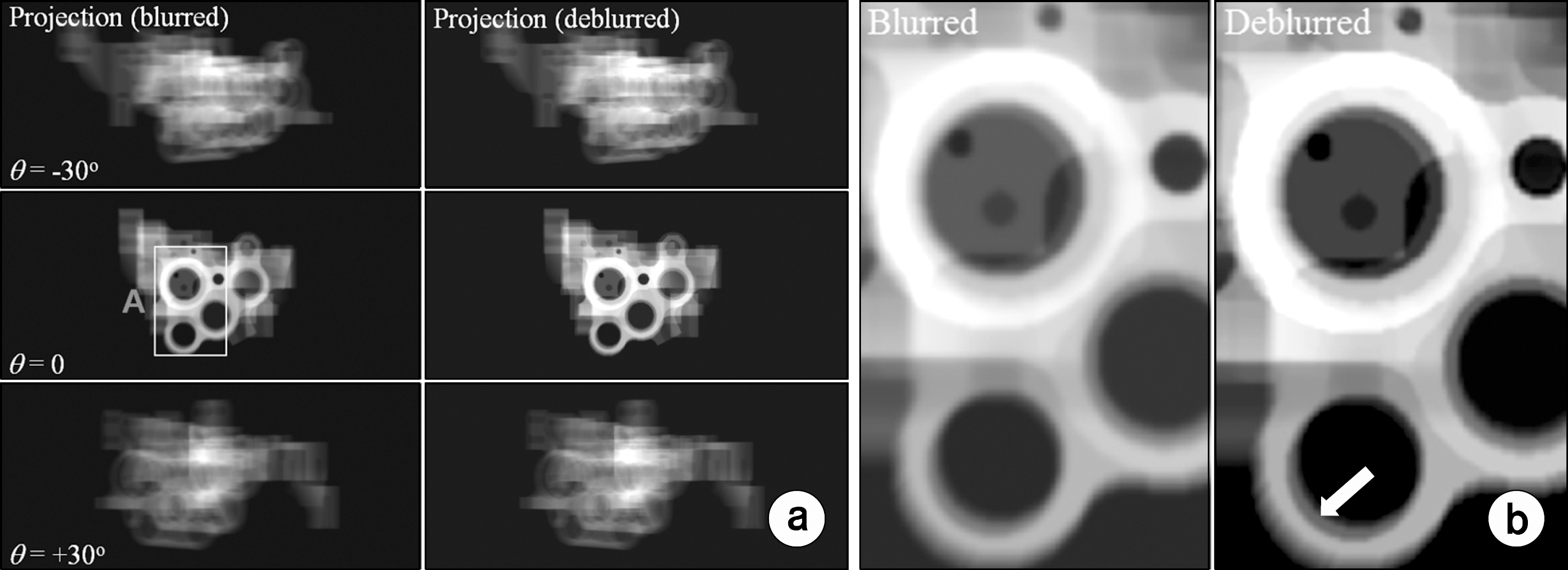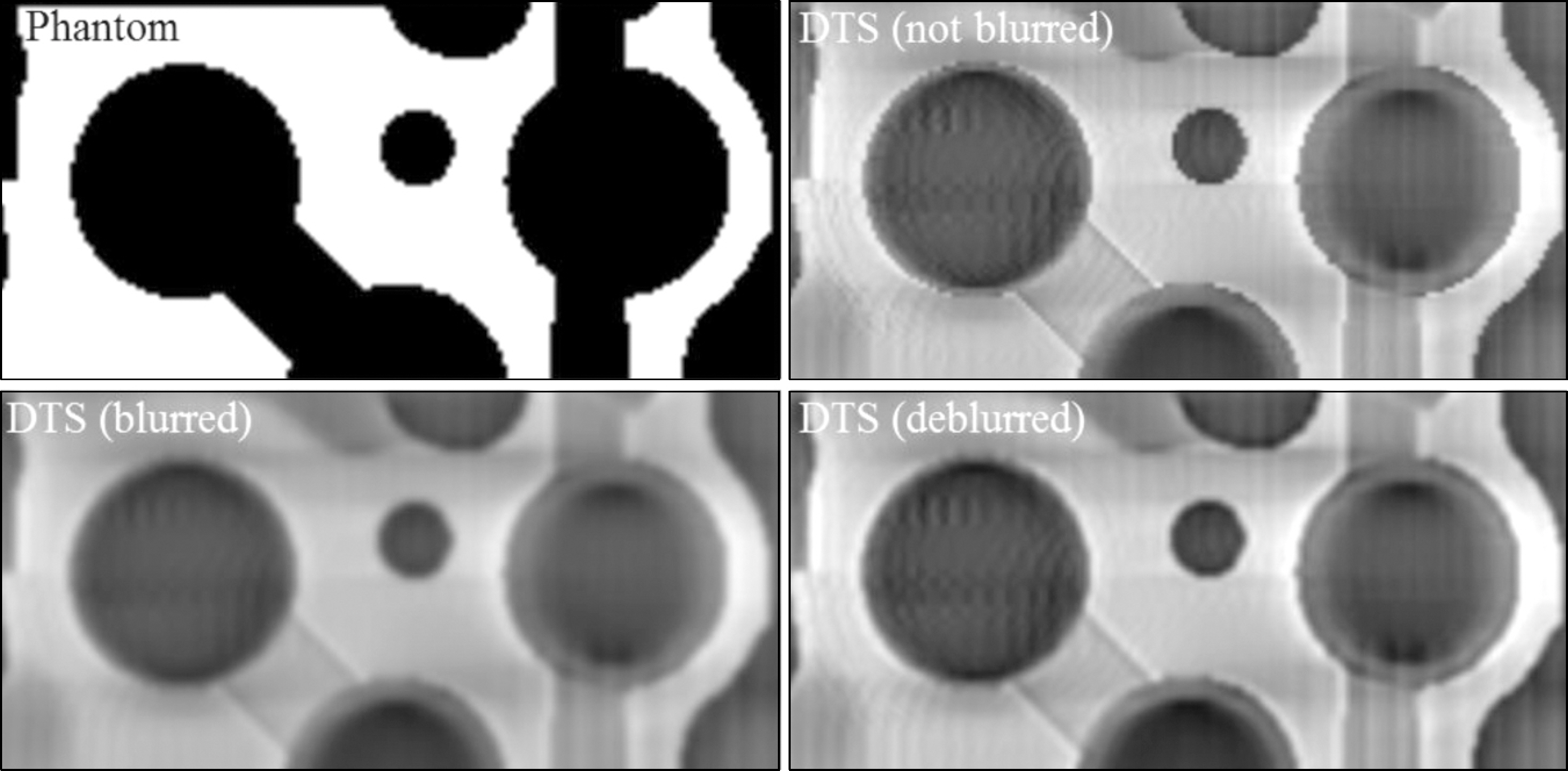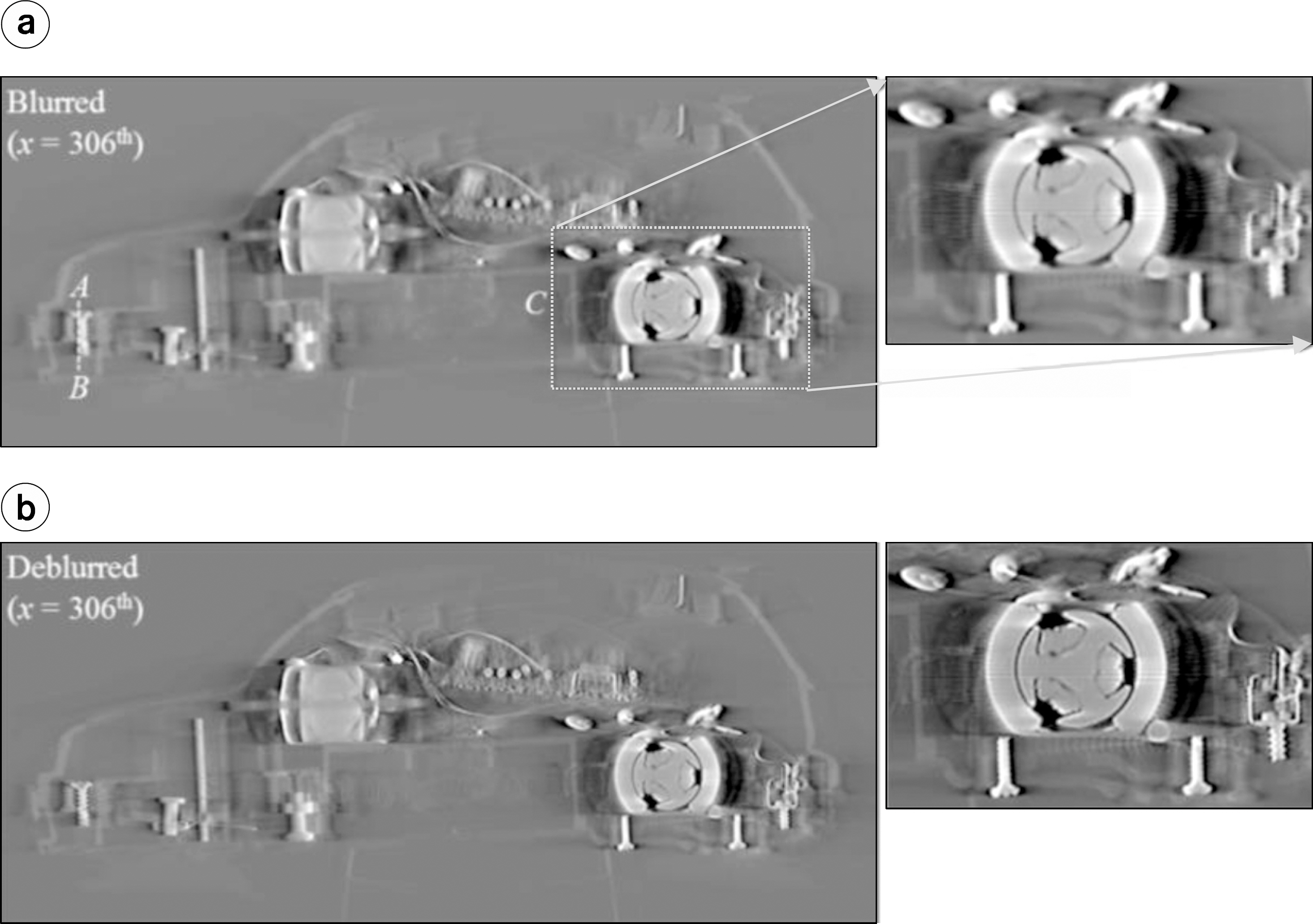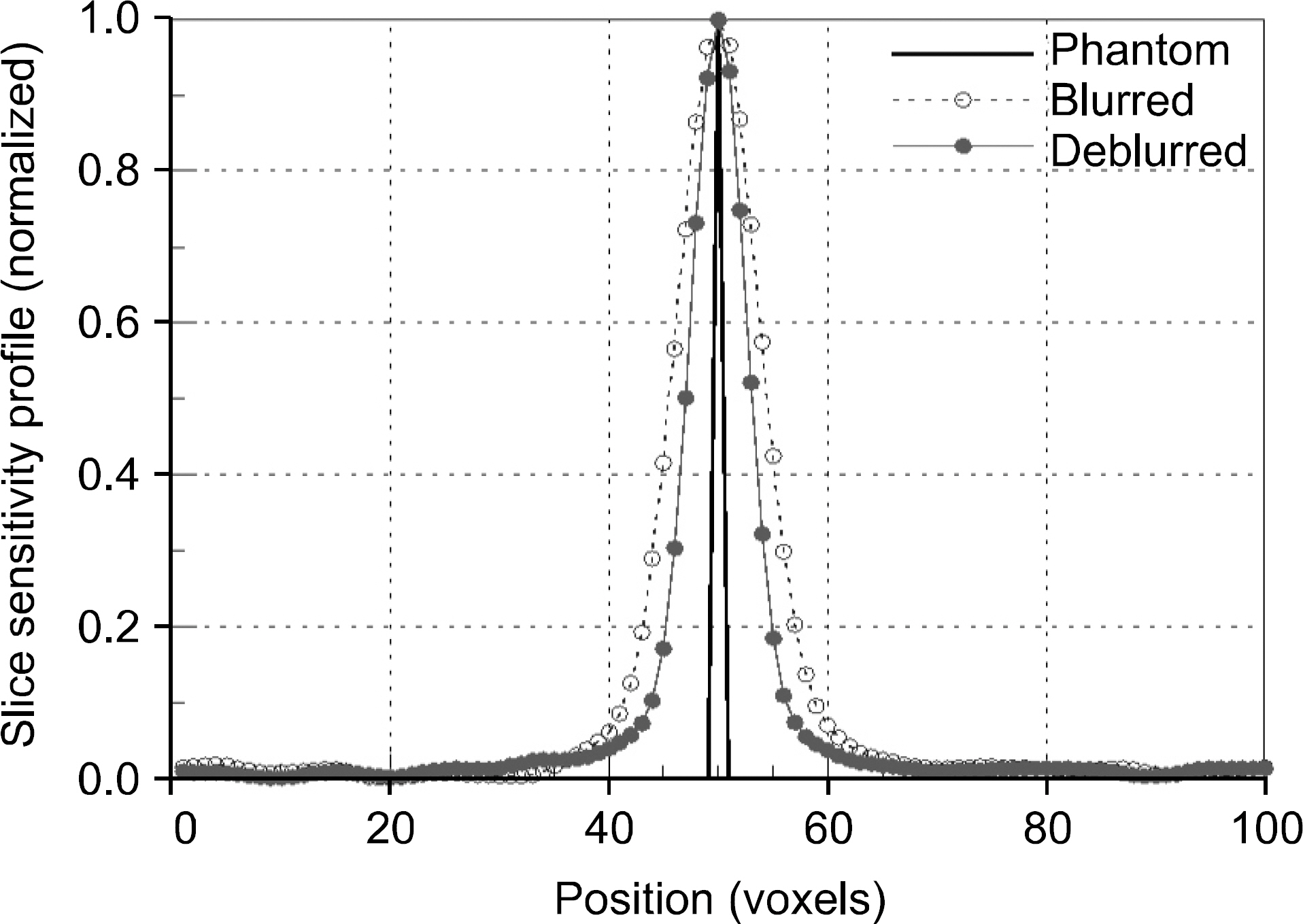Prog Med Phys.
2016 Mar;27(1):1-7. 10.14316/pmp.2016.27.1.1.
Compressed-sensing (CS)-based Image Deblurring Scheme with a Total Variation Regularization Penalty for Improving Image Characteristics in Digital Tomosynthesis (DTS)
- Affiliations
-
- 1Department of Radiation Convergence Engineering and iTOMO Research Group, Yonsei University, Wonju, Korea. hscho1@yonsei.ac.kr
- KMID: 2161932
- DOI: http://doi.org/10.14316/pmp.2016.27.1.1
Abstract
- In this work, we considered a compressed-sensing (CS)-based image deblurring scheme with a total-variation (TV) regularization penalty for improving image characteristics in digital tomosynthesis (DTS). We implemented the proposed image deblurring algorithm and performed a systematic simulation to demonstrate its viability. We also performed an experiment by using a table-top setup which consists of an x-ray tube operated at 90 kVp, 6 mAs and a CMOS-type flat-panel detector having a 198-µm pixel resolution. In the both simulation and experiment, 51 projection images were taken with a tomographic angle range of θ=60° and an angle step of Δθ=1.2° and then deblurred by using the proposed deblurring algorithm before performing the common filtered-backprojection (FBP)-based DTS reconstruction. According to our results, the image sharpness of the recovered x-ray images and the reconstructed DTS images were significantly improved and the cross-plane spatial resolution in DTS was also improved by a factor of about 1.4. Thus the proposed deblurring scheme appears to be effective for the blurring problems in both conventional radiography and DTS and is applicable to improve the present image characteristics.
MeSH Terms
Figure
Reference
-
References
1. Dobbins J., Godfrey D.Digitalx-raytomosynthesis: current state of the art and clinical potential. Phys.Med.Biol. 48(19):R65–106. 2003.2. Xu F., Helfen L., Baumbach T., Suhonen H.Comparison of image quality incomputed laminography and tomography. Opt. Express. 20(2):794–806. 2012.3. Choi K., Wang J., Zhu L., Suh T. S., Boyd S., Xing L.Compressed sensing based cone-beam computed tomography reconstruction with a first-order method. Med. Phys. 37:5113–5125. 2010.4. Xu H., Huang T., Lv X., Liu J.The Implementation of LSMR in Image Deblurring. Appl.Math.Inf. 8(6):3041–3048. 2014.
Article5. Figueiredo M., Nowak R.An EM algorithm for wave-let-based image restoration. IEEE Trans. Image Process. 12:906–916. 2003.
Article6. Li X.Fine-granularity and spatially-adaptive regularization for projection-based image deblurring. IEEE Trans. Image Process. 20:971–983. 2011.
Article7. Babacan S., Molina R., Katsaggelos A.Parameter estimation in TV image rest orationusingvariationaldistribution approximation. IEEE Trans. Image Process. 17(3):326–339. 2008.8. Park J., Song B. Y., Kim J. S., et al. Fast compressed sensing-based CBCT reconstruction using Barzilai-Borweinfor-mulationfor application toonline IGRT. Med.Phys. 39(3):1207–1217. 2012.9. Oh J. E., Cho H. S., Kim D. S., Choi S. I., Je U. K.Application of digital to mosynthesis(DTS) of optimal deblurring filters for dentalx-ray imaging. Jof the Korean Phys.Soc. 60(6):1161–1166. 2012.
- Full Text Links
- Actions
-
Cited
- CITED
-
- Close
- Share
- Similar articles
-
- Breast Shape Reconstruction during Digital Breast Tomosynthesis Based on Discrete Algebraic Reconstruction Technique
- Digital Tomosynthesis for Patient Alignment System Using Half-fan Mode CBCT Projection Images
- Effect of the Number of Projected Images on the Noise Characteristics in Tomosynthesis Imaging
- Digital Tomosynthesis versus Conventional Radiography for Evaluating Osteonecrosis of the Femoral Head
- A Study of Various Filter Setups with FBP Reconstruction for Digital Breast Tomosynthesis

